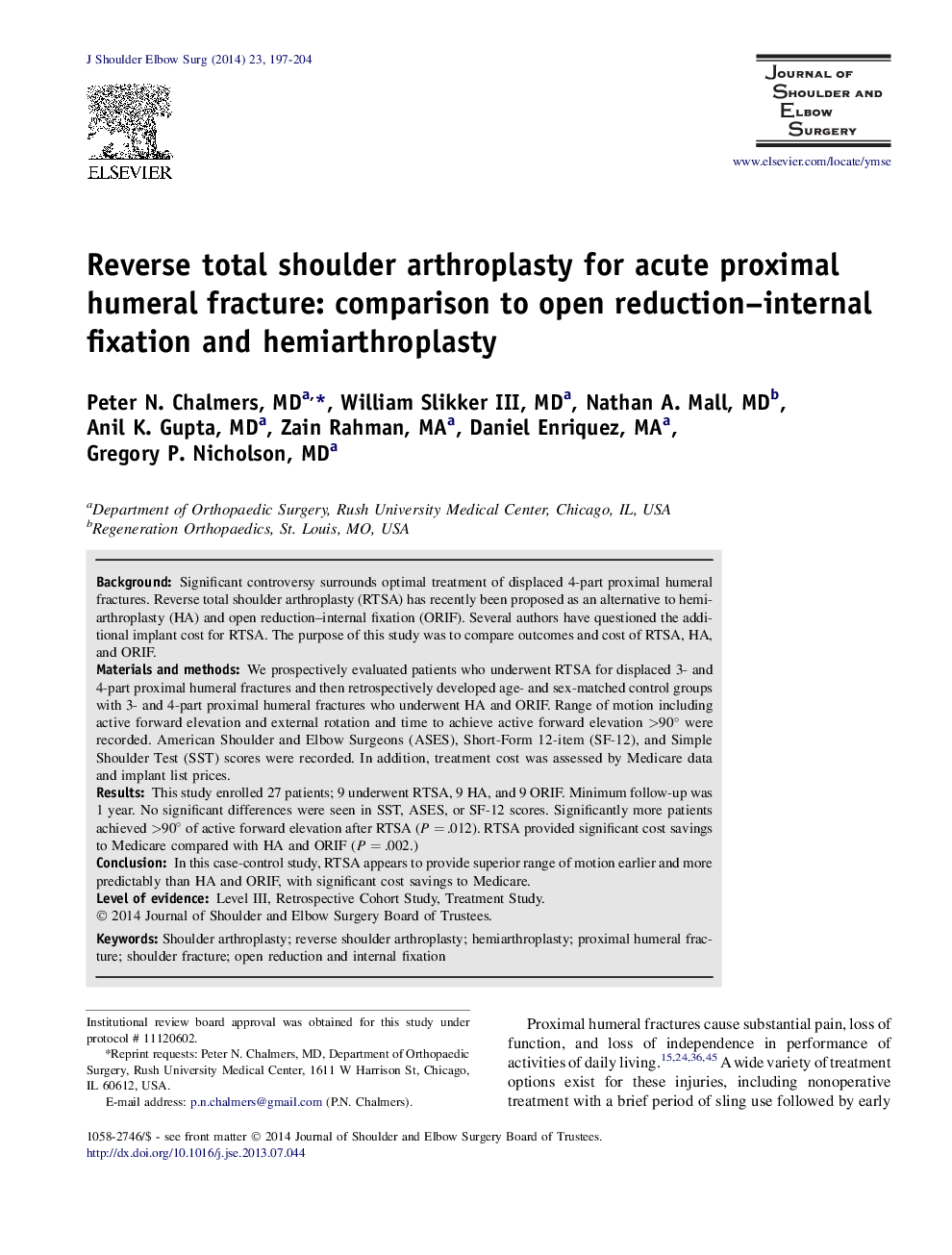| Article ID | Journal | Published Year | Pages | File Type |
|---|---|---|---|---|
| 4073891 | Journal of Shoulder and Elbow Surgery | 2014 | 8 Pages |
BackgroundSignificant controversy surrounds optimal treatment of displaced 4-part proximal humeral fractures. Reverse total shoulder arthroplasty (RTSA) has recently been proposed as an alternative to hemiarthroplasty (HA) and open reduction–internal fixation (ORIF). Several authors have questioned the additional implant cost for RTSA. The purpose of this study was to compare outcomes and cost of RTSA, HA, and ORIF.Materials and methodsWe prospectively evaluated patients who underwent RTSA for displaced 3- and 4-part proximal humeral fractures and then retrospectively developed age- and sex-matched control groups with 3- and 4-part proximal humeral fractures who underwent HA and ORIF. Range of motion including active forward elevation and external rotation and time to achieve active forward elevation >90° were recorded. American Shoulder and Elbow Surgeons (ASES), Short-Form 12-item (SF-12), and Simple Shoulder Test (SST) scores were recorded. In addition, treatment cost was assessed by Medicare data and implant list prices.ResultsThis study enrolled 27 patients; 9 underwent RTSA, 9 HA, and 9 ORIF. Minimum follow-up was 1 year. No significant differences were seen in SST, ASES, or SF-12 scores. Significantly more patients achieved >90° of active forward elevation after RTSA (P = .012). RTSA provided significant cost savings to Medicare compared with HA and ORIF (P = .002.)ConclusionIn this case-control study, RTSA appears to provide superior range of motion earlier and more predictably than HA and ORIF, with significant cost savings to Medicare.
